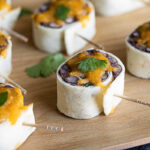It’s widely known that soda consumption is prevalent in Mexico, much like in the United States. While “Mexican Coke,” distinguished by its cane sugar recipe, has gained international recognition and availability, the realm of Mexican fizzy drinks extends far beyond this single iconic beverage.
The United States boasts its own extensive array of carbonated soft drinks, but Mexican Sodas offer a unique and compelling alternative, primarily due to their diverse and intriguing flavors rarely encountered north of the border. Think tamarind, sangría, or hibiscus – tastes that evoke the vibrant culture of Mexico itself. Furthermore, while high fructose corn syrup dominates the US soda industry, many Mexican soda brands traditionally favored cane sugar, though economic pressures are leading some to reconsider this practice.
Venturing beyond mainstream supermarkets into local taco trucks or Latin American markets unveils the true breadth of Mexican soda offerings. Even standard grocery stores are increasingly dedicating aisles to Latin foods, where hidden gems await discovery. This guide serves as an introduction to seven must-try Mexican sodas that promise to expand your palate and offer a taste of authentic Mexican refreshment.
Jarritos
:max_bytes(150000):strip_icc()/optaboutcomcoeusresourcescontent_migration__serious_eatsseriouseats.comimages20140520140530-294426-jarritos-jamaica-soda-93a6c47de15142748791aa8d48254280.jpg)
Jarritos, meaning “little pots” in Spanish, was established in the 1950s by Don Francisco Hill. It has since become the best-selling Mexican soda in the United States, instantly recognizable for its brightly colored, naturally flavored sodas packaged in distinctive glass bottles. With eleven flavors in its repertoire, including exotic options like guava and mango, Jarritos caters to those with a sweet tooth. However, for a more nuanced experience, the tamarind flavor offers a delightful tartness, while the Jamaica, infused with intense hibiscus notes, provides a uniquely refreshing experience, particularly on a warm day.
Mundet
:max_bytes(150000):strip_icc()/optaboutcomcoeusresourcescontent_migration__serious_eatsseriouseats.comimages20140520140530-294426-sidral-mundet-soda-beeb916b49774dc786ef720da56d2e8c.jpg)
Dating back to 1902, Mundet apple soda was created by Don Arturo Mundet, a pioneer in using crown caps for bottled beverages. Mundet presents itself in two apple variations: Sidral, the “red apple” soda, and Manzana Verde, the “green apple” version, with the latter being less common in the US market. Despite its apple-centric branding and website, Mundet contains a minimal amount of actual apple juice – less than 1%, as indicated on the label. Nevertheless, it delivers prominent and surprisingly authentic apple cider notes, making it a popular choice at taco stands. Sidral Mundet’s crisp apple flavor complements the rich flavors of carnitas tacos, and it even mixes well with Oloroso sherry to create an unexpectedly sophisticated highball cocktail.
Lift
:max_bytes(150000):strip_icc()/optaboutcomcoeusresourcescontent_migration__serious_eatsseriouseats.comimages20140520140530-294426-manzana-lift-soda-1fbeea38e6c948ea88f81ea46336c880.jpg)
Lift, a soft drink line owned by The Coca-Cola Company, has achieved flavor-specific popularity in different regions globally. While lemon is favored in Australia and grapefruit in Guatemala, Manzana Lift, an apple-flavored soda, reigns supreme in Mexico. Made with high fructose corn syrup, Manzana Lift emulates the distinct flavor profile of Jolly Rancher candies. It is lighter in body compared to Sidral Mundet and contains only a trace amount of apple juice concentrate. Despite not offering authentic fruit flavors, Manzana Lift’s bright acidity and candy-apple taste make it an excellent counterpoint to rich and salty dishes. Often found in taller 500 mL bottles, Manzana Lift provides a generous serving size at a comparable price to smaller Mexican sodas, offering great value.
Sol
:max_bytes(150000):strip_icc()/optaboutcomcoeusresourcescontent_migration__serious_eatsseriouseats.comimages20140520140530-294426-tamarindo-sol-soda-c75202a001484f868bbee7464ec66264.jpg)
PepsiCo’s answer to Coca-Cola’s Mexican soda offerings comes in the form of the Sol line, another Mexican-produced range of soft drinks. Similar to Coca-Cola’s Lift in Mexico, Sol utilizes high fructose corn syrup. Manzanita Sol, the apple-flavored variant, previously earned recognition in a taste test, praised for its harmonious balance of sweet and tart notes reminiscent of apple cider. Manzanita Sol has been increasingly gaining traction in the United States, even being introduced at Taco Bell locations in 2014 with further expansion plans. Beyond apple, Tamarindo Sol stands out with its unique earthy, sweet, and sour flavor profile, making it another worthwhile flavor to explore.
Topo Sabores
:max_bytes(150000):strip_icc()/optaboutcomcoeusresourcescontent_migration__serious_eatsseriouseats.comimages20140520140530-294426-topo-sabores-soda-a4be452bc14f4a99a2e4b7223e330961.jpg)
Topo Sabores sodas originate from the renowned Topo Chico mineral water company, famous for obtaining the first Coca-Cola bottling franchise in Mexico in 1926. Like Jarritos, Topo Sabores presents a spectrum of vibrant, sweet flavors like strawberry and pineapple, akin to popular US brands like Sunkist and Crush. Among the range, the orange flavor is particularly notable and enjoyable. It delivers a classic orange soda experience without excessive sweetness, making it a balanced and refreshing choice.
Sangría Señorial
:max_bytes(150000):strip_icc()/optaboutcomcoeusresourcescontent_migration__serious_eatsseriouseats.comimages20140520140530-294426-sangria-senorial-soda-34fe4cf7dd424ab69946752a66f7b4c6.jpg)
Sangría Señorial might be considered an acquired taste, offering a unique flavor profile that somewhat resembles sangria due to the inclusion of wine grapes. However, it is more accurately described as a sweet, mixed-fruit wine cooler without the alcohol content. Created in 1964 by Spanish-born Mexican resident Don Manuel Gómez Cosío, Sangría Señorial has gained widespread popularity through Mexican distributor Novamex, also responsible for distributing Jarritos and Sidral Mundet. Serving it ice cold with a splash of lemon or lime enhances its grape and cherry notes, making it a sophisticated and refreshing non-alcoholic option.
Mexican Coke
:max_bytes(150000):strip_icc()/optaboutcomcoeusresourcescontent_migration__serious_eatsseriouseats.comimages20140520140530-294426-mexican-coke-3219dc43366041539f06cc1e2003921d.jpg)
No exploration of Mexican soda would be complete without mentioning the universally recognized Mexican Coke. Despite taste tests suggesting that some might not actually prefer it over American Coke, Mexican Coke has cultivated a dedicated following. The primary distinction lies in its use of cane sugar instead of high fructose corn syrup, believed by many to contribute to a superior taste. However, reports have indicated that a significant portion of Coca-Cola produced in Mexico now uses corn syrup, with only the exported version to the US guaranteed to be made with real cane sugar. Often sold at a premium, Mexican Coke invites a side-by-side comparison to determine if the perceived difference justifies the extra cost. Its widespread availability, even in bulk at stores like Costco, makes it easily accessible for those curious to experience this iconic Mexican soda.
Mexican sodas offer a vibrant and flavorful alternative to mainstream soft drinks. From fruity and floral to spiced and citrusy, exploring these beverages is a delicious way to experience a taste of Mexican culture.
